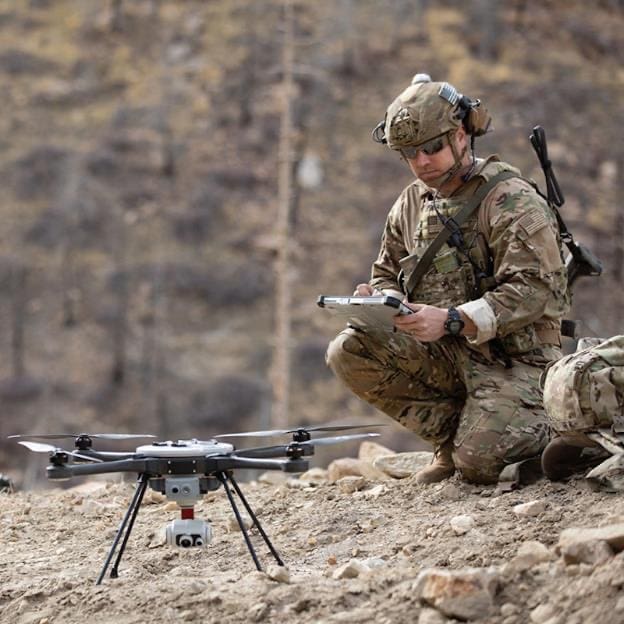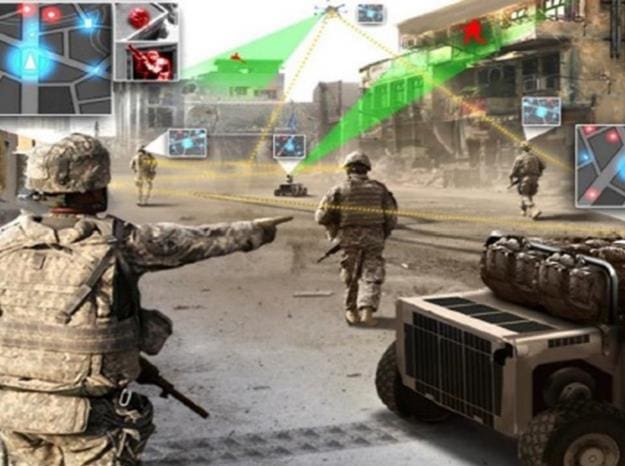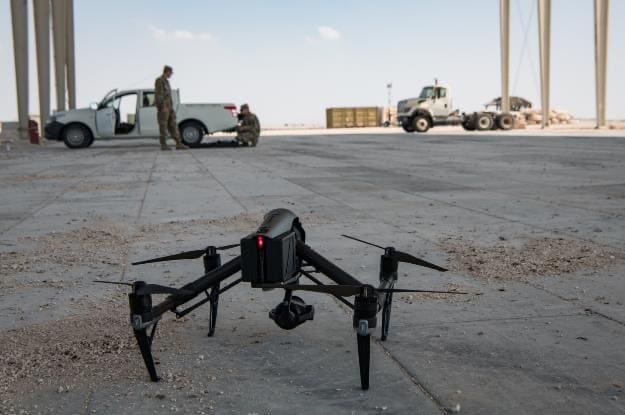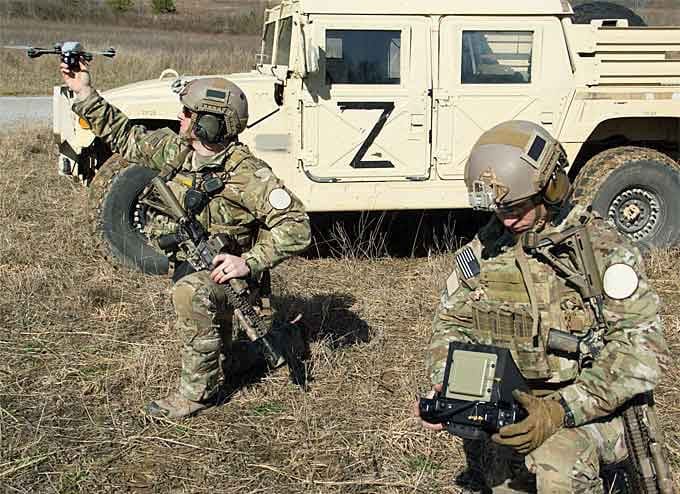The U.S. departments of Defense and Homeland Security will spend billions of dollars over the next few years on unmanned aerial and ground vehicles (UAVs) and sensor systems. The U.S. Army and U.S. Marine Corps will make greater use of Class I mini/micro vertical takeoff and landing (VTOL) UAVs to provide tactical intelligence, surveillance and reconnaissance (ISR) capabilities at the small unit level. Other branches of the Department of Defense and the Department of Homeland Security are also dramatically increasing the use of drones and sensors as crucial components of infrastructure, border, and base defense systems.

Small, portable, VTOL, UAV systems provide a unique and flexible maneuverable airborne platform for close-to-mid-range intelligence, surveillance and reconnaissance (ISR) coverage. Class I drones of this type are rapidly becoming the must-have “eye in the sky” for military and security forces seeking crucial information-based tactical command and control capability.
Photo: FLIR Systems R80D SkyRaider Class I VTOL UAV system. Copyright: FLIR Systems.
Virtually all small UAV platforms, however, rely on batteries that provide only a short amount of flight time before they need to be recharged or replaced – manually. This need to manually replace and recharge batteries presents obvious tactical and logistical issues.
But what if there was a way for UAVs to be autonomously, automatically and wirelessly recharged whenever and wherever necessary? Well, now there is. WattUp® radio frequency (RF) wireless charging technology from Energous Corporation.
As WattUp is an embedded technology, there is no need for cables, ports or battery doors that reduce the physical integrity of devices and increase the complexity of product design and manufacturing. By eliminating these features, hardware can have greater physical integrity, including being dust- and waterproof – keeping internal circuitry fully protected. And as there is no need to manually disconnect and replace batteries or connect chargers – multiple cables, connectors and adapters can be eliminated.

Illustration by U.S. Army. U.S. ground troops patrol while unmanned ground vehicles carry their extra equipment and small UAVs provide aerial surveillance coverage.
Use of this image is for informational purposes only – the appearance of U.S. Department of Defense (DoD) visual information does not imply or constitute DoD endorsement.
WattUp uses RF signal technology similar to Wi-Fi or Bluetooth to establish a link between a Power Transmitter and a Power Receiver. Once a connection is established, the transmitter sends power to the receiver along the same signal path. This “conversation” happens 100x/second and sends power safely to devices or batteries at various distances.
WattUp does not use magnetic coils requiring precise alignment or physical contact with the device for charging to take place – power is transmitted through the air at near-field and mid-field ranges. This capability makes WattUp ideal for devices that have rounded or irregular shapes – like most UAVs. WattUp systems also can be set up to charge automatically as soon as the device is within range of a transmitter, with a single transmitter capable of charging several devices simultaneously.

A drone that is part of the 379th Expeditionary Security Forces Squadron (379th ESFS) counter-small unmanned aerial systems (C-UAS) program stands ready Nov. 5, 2020, at Al Udeid Air Base, Qatar. The 379th ESFS Defenders have established one of the most robust C-UAS programs in the U.S. Central Command area of responsibility to detect and defend against adversarial drones that pose a potential threat to the safety and security of AUAB.
Photo credit: U.S. Air National Guard photo by Tech. Sgt. Brigette Waltermire. Use of this image is for informational purposes only – the appearance of U.S. Department of Defense (DoD) visual information does not imply or constitute DoD endorsement.
Finally, WattUp’s secure, cloud-based, management software enables users to track a battery’s state of charge and determine when it will need recharging. It also enables users to monitor the health and status of batteries held in depots and storerooms so that batteries can be issued with full assurance.
WattUp® RF wireless charging technology can potentially bring many new benefits and capabilities to military and homeland security UAV operators. For example, when multiple UAVs are providing roving aerial surveillance for base and infrastructure defense, a WattUp-enabled drone could be set to automatically fly back to a landing / charging pad to recharge at the end of its flight time, while a fully charged UAV lifts off to take its place. With UAVs automatically rotating in and out of service and recharging autonomously, uninterrupted ISR coverage of areas of interest could be achieved.
WattUp also has a potential role in the unmanned aerial systems (UAS) rich operational scenarios envisioned in the U.S. Army and U.S. Marine Corps concepts for the squad of the future. Autonomous ground vehicles such as the MUTT military utility tactical truck could be utilized as automated mobile RF wireless charging stations, enabling tactical VTOL UAVs to recharge near the forward edge of the battle area.
Without the need for manual interaction, power transmission could also be done safely at higher levels (to achieve shorter charging times) than is possible when human operators are present. WattUp systems are also scalable, so power transmission levels can be adjusted as necessary for the application and operating environment. For example, a 15W Base Station system could be scaled up to 30W or 45W, while charging distance can scale from 5mm for high power devices, up to few meters for lower power applications.

Soldiers deploy a small ‘quadcopter’ style UAV system on a tactical reconnaissance mission.
Photo: InstantEye Robotics Mk-3 GEN4-D1 small unmanned aerial system. Copyright: InstantEye Robotics.
Unmanned aerial systems, and the sensor packages they carry, have become a must-have facet of military and security forces today – and their importance will only continue to grow. Short flight times and manual battery changing and charging, however, limit how much critical ISR capability they can deliver.
Implementing WattUp RF wireless charging technology could help small UAS operators overcome the issues associated with current battery charging options, and thus be a force multiplier for critical tactical ISR capabilities.
For further information about employing WattUp® RF wireless charging technology in military applications, visit energous.com/military.
—
By Lawrence Holsworth and James Pope

